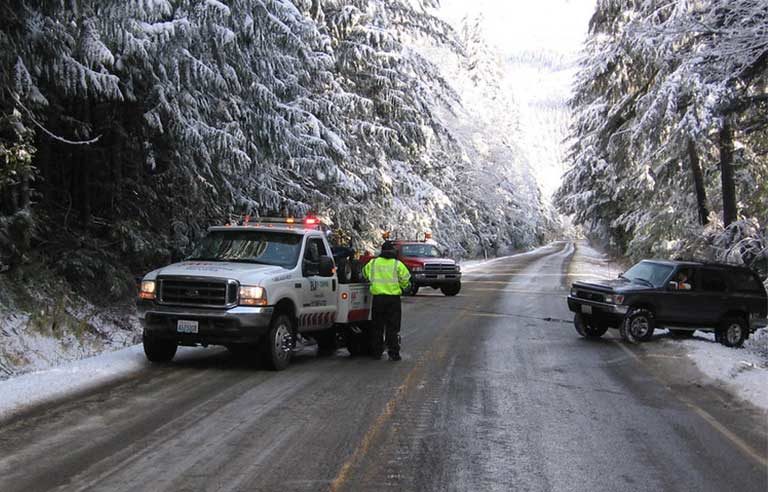
Photo: Washington State Department of Transportation/Flickr
Washington — “Intuitive and straightforward” near-miss reporting systems can help roadside response workers avoid being struck by passing vehicles, the AAA Foundation for Traffic Safety says.
For a new report, researchers reviewed existing reporting systems, interviewed stakeholders and focus groups, and surveyed more than 1,300 roadside responders. They found that 29% of participants from towing and recovery organizations reported encountering incidents involving near misses daily, a rate “significantly higher than other agency types,” the foundation says.
Further, more than 40% of respondents from towing and law enforcement view near misses as a “routine” part of their job. “Towing and service technicians and other responders working at roadside are at near-constant risk” of being struck, the report states.
The foundation found that although 85% of the respondents said they believe reporting near misses can bolster safety, over 40% of the participants in the towing sector haven’t been trained on incident reporting.
Insights from research, the interviews and the survey helped shape foundation recommendations for near-miss reporting systems. Among them:
- Ensure the system offers a clean and simple reporting process.
- Train responders on the system and the benefits of near-miss reporting.
- Encourage supervisors and responders to discuss near misses regularly.
- Offer reporting compatibility with smartphones and tablets.
- Allow for self-reports and reports submitted on another’s behalf. Provide feedback on the outcomes of incidents.
- Allow anonymous submissions to encourage more responders to report incidents without fear of repercussion.
- Establish standard definitions of what constitutes a near miss to ensure consistency in reporting.
- Acknowledge the varying risk tolerances/perceptions among responders and address them in the reporting criteria.
- When possible, incorporate technologies such as camera-based sensors to detect incidents automatically.
“By addressing these elements, the expected near-miss reporting system can significantly enhance the safety of roadside responders,” the report states, “providing valuable data to develop targeted countermeasures and ultimately reducing the risks they face on the job.”
McCraren Compliance offers a full range of safety and health training and consulting services. Plus we can help you incorporate well-being into your traditional systems in order to support the Total Worker Health of your workforce.
Call 888-758-4757, email info@mccrarencompliance.com or visit our website www.mccrarencompliance.com
Original article published by Safety+Health an NSC publication


